India's 1000+ military helicopter shopping list
The Indian Air Force purchase of 126 Rafale fighters has made global headlines, and the Indo-Russian Fifth Generation Fighter Aircraft could be another jaw-dropper. But Indian military aviation could see an even more prominent growth area in helicopters, where the defence services are poised to induct well over 1,000 rotary wing aircraft in the coming decade, the majority of them developed and built in the country.
Already on the anvil for the army, IAF, navy and coast guard are the following:
The IAF is inducting 139 Russian Mi-17 V-5 medium lift helicopters, for an estimated $2.4 billion. The workhorse Mi-17, which transports 26 soldiers in combat gear, or four tonnes of supplies to high altitude posts, has been in IAF service for decades, but the new-model V-5 is a vastly superior machine, with new engines, rotor blades and avionics.
An IAF order for 80 Mi-17s is already being delivered, which is likely to be followed by an order for 59 more
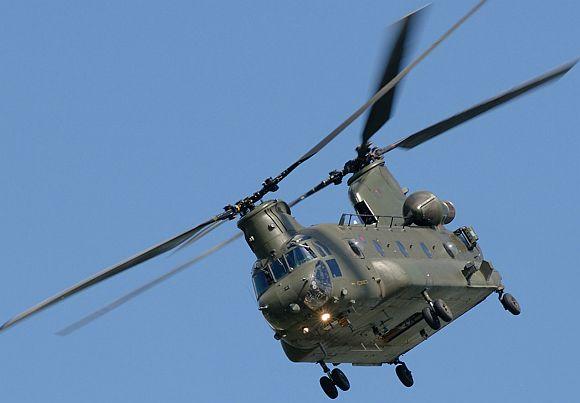
Fifteen American CH-47 Chinook heavy lift helicopters will be bought to replace the IAF's Russian Mi-26 helicopters, of which just three to four remain serviceable.
The Chinook, built by Boeing, has seen extensive combat, most recently in Iraq and Afghanistan.
The IAF has evaluated the helicopter and is pleased with its avionics and power, which allows it to accurately deliver 50 fully-equipped soldiers, or a payload of 12.7 tons, on to the roof of a house or the edge of a cliff.
The IAF has also completed trials for the purchase of 22 medium attack helicopters, and homed on to Boeing's AH-64 Apache.
Attack helicopters, which operate from close behind the forward troops, provide immediate fire support -- cannons, rockets and anti-tank missiles -- to soldiers that encounter the enemy, providing them a battle-winning advantage.
Unlike most other countries, India has chosen not to use attack helicopters in counter-insurgency operations for fear of collateral damage.
The IAF and army have also placed a Rs 7,000-crore order for 159 Dhruv Mark III utility helicopters.
These have been designed and built by Hindustan Aeronautics Limited, which builds 36 Dhruvs each year.
There is an estimated need for more than 350 Dhruvs for the Army, IAF, coast guard and paramilitary forces.
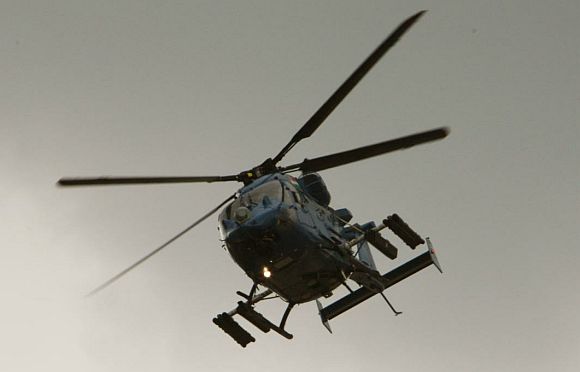
The Navy is buying an additional 50 light, twin-engine helicopters, most probably from AgustaWestland.
The Dhruv does not meet its needs since its composite rotors cannot be folded up for stowing the helicopter in a warship's tight confines.
In addition, the navy is procuring another 91 medium, multi-role helicopters to replace its vintage Sea King fleet, which flies from larger frigates and destroyers.
A global tender is out for 16 helicopters, to which another 75 have been added.
Riding on the Dhruv's success is HAL's Rudra, a heavily armed version of the Dhruv, which carries a cannon, rocket pods, anti-tank missiles and a full suite of electronic warfare equipment. The army and the air force will buy 76 Rudras.
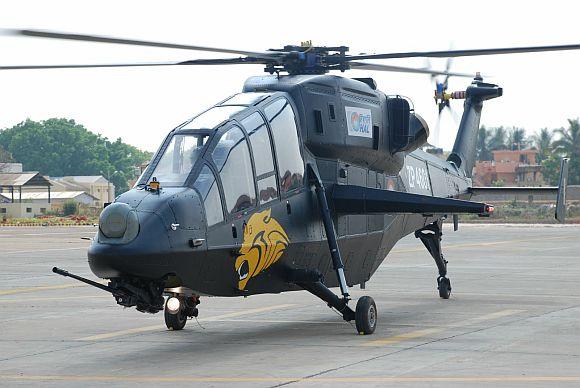
HAL is also developing the Light Combat Helicopter, of which 179 are on order (IAF 65; army 114).
This 5.5-ton light armed helicopter features the Shakti engine, the Dhruv's dynamic components (main rotor, tail rotor, and the gearbox), and the weapons suite that is being developed on the Rudra.
The LCH will be a high altitude virtuoso: taking off from Himalayan altitudes of 10,000 feet, firing guns and rockets up to 16,300 feet, and launching missiles at UAVs flying at over 21,000 feet.
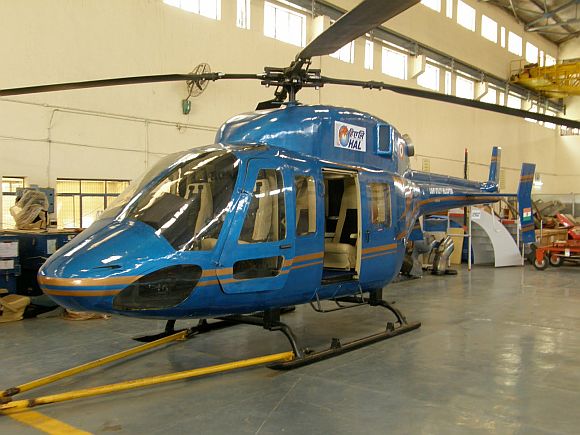
The military's other bulk requirement is for 384 light utility helicopters, or LUH's, to replace the army and IAF's obsolescent Cheetahs and Chetaks.
This has been divided into two streams: 197 LuHs are being bought off-the-shelf through a global tender; and 187 LuHs are being developed and built in India by HAL.
To ensure timely delivery, the Ministry of Defence has specified target dates for HAL's development milestones: building of a mock-up; the design freeze; the first flight; Initial Operational Clearance, and so on.
Each time HAL misses a milestone, its order reduces from 187.

Unlike IAF's fixed wing aircraft acquisition plan that focuses on foreign buys, its rotary wing plan leans towards indigenisation. This after a strategic assessment in the mid-1990s, when Ashok Baweja was HAL's chairman, that indigenisation could be realistically pursued in the less challenging rotary wing field than in the cutting-edge realm of fighter aircraft.
This policy drew strength from the technological breakthroughs of the Dhruv helicopter and the Turbomeca-HAL Shakti engine.
Both these were optimised for high altitude operations up to 20,000 feet, a unique feature in the army's operating environment.
P Soundara Rajan, HAL's helicopter chief, says the Bangalore-based division will ramp up turnover from the current 10 per cent of HAL's turnover to 25 per cent a decade from now. Having taken 40 years to build its first 700 helicopters, which were basic second-generation machines, HAL aims at building another 700 fourth-generation within the next 15-20 years
Get our updates FREE
India's 1000+ military helicopter shopping list
The Indian Air Force purchase of 126 Rafale fighters has made global headlines, and the Indo-Russian Fifth Generation Fighter Aircraft could be another jaw-dropper. But Indian military aviation could see an even more prominent growth area in helicopters, where the defence services are poised to induct well over 1,000 rotary wing aircraft in the coming decade, the majority of them developed and built in the country.
Already on the anvil for the army, IAF, navy and coast guard are the following:
The IAF is inducting 139 Russian Mi-17 V-5 medium lift helicopters, for an estimated $2.4 billion. The workhorse Mi-17, which transports 26 soldiers in combat gear, or four tonnes of supplies to high altitude posts, has been in IAF service for decades, but the new-model V-5 is a vastly superior machine, with new engines, rotor blades and avionics.
An IAF order for 80 Mi-17s is already being delivered, which is likely to be followed by an order for 59 more

Fifteen American CH-47 Chinook heavy lift helicopters will be bought to replace the IAF's Russian Mi-26 helicopters, of which just three to four remain serviceable.
The Chinook, built by Boeing, has seen extensive combat, most recently in Iraq and Afghanistan.
The IAF has evaluated the helicopter and is pleased with its avionics and power, which allows it to accurately deliver 50 fully-equipped soldiers, or a payload of 12.7 tons, on to the roof of a house or the edge of a cliff.
The IAF has also completed trials for the purchase of 22 medium attack helicopters, and homed on to Boeing's AH-64 Apache.
Attack helicopters, which operate from close behind the forward troops, provide immediate fire support -- cannons, rockets and anti-tank missiles -- to soldiers that encounter the enemy, providing them a battle-winning advantage.
Unlike most other countries, India has chosen not to use attack helicopters in counter-insurgency operations for fear of collateral damage.
The IAF and army have also placed a Rs 7,000-crore order for 159 Dhruv Mark III utility helicopters.
These have been designed and built by Hindustan Aeronautics Limited, which builds 36 Dhruvs each year.
There is an estimated need for more than 350 Dhruvs for the Army, IAF, coast guard and paramilitary forces.

The Navy is buying an additional 50 light, twin-engine helicopters, most probably from AgustaWestland.
The Dhruv does not meet its needs since its composite rotors cannot be folded up for stowing the helicopter in a warship's tight confines.
In addition, the navy is procuring another 91 medium, multi-role helicopters to replace its vintage Sea King fleet, which flies from larger frigates and destroyers.
A global tender is out for 16 helicopters, to which another 75 have been added.
Riding on the Dhruv's success is HAL's Rudra, a heavily armed version of the Dhruv, which carries a cannon, rocket pods, anti-tank missiles and a full suite of electronic warfare equipment. The army and the air force will buy 76 Rudras.

HAL is also developing the Light Combat Helicopter, of which 179 are on order (IAF 65; army 114).
This 5.5-ton light armed helicopter features the Shakti engine, the Dhruv's dynamic components (main rotor, tail rotor, and the gearbox), and the weapons suite that is being developed on the Rudra.
The LCH will be a high altitude virtuoso: taking off from Himalayan altitudes of 10,000 feet, firing guns and rockets up to 16,300 feet, and launching missiles at UAVs flying at over 21,000 feet.

The military's other bulk requirement is for 384 light utility helicopters, or LUH's, to replace the army and IAF's obsolescent Cheetahs and Chetaks.
This has been divided into two streams: 197 LuHs are being bought off-the-shelf through a global tender; and 187 LuHs are being developed and built in India by HAL.
To ensure timely delivery, the Ministry of Defence has specified target dates for HAL's development milestones: building of a mock-up; the design freeze; the first flight; Initial Operational Clearance, and so on.
Each time HAL misses a milestone, its order reduces from 187.

Unlike IAF's fixed wing aircraft acquisition plan that focuses on foreign buys, its rotary wing plan leans towards indigenisation. This after a strategic assessment in the mid-1990s, when Ashok Baweja was HAL's chairman, that indigenisation could be realistically pursued in the less challenging rotary wing field than in the cutting-edge realm of fighter aircraft.
This policy drew strength from the technological breakthroughs of the Dhruv helicopter and the Turbomeca-HAL Shakti engine.
Both these were optimised for high altitude operations up to 20,000 feet, a unique feature in the army's operating environment.
P Soundara Rajan, HAL's helicopter chief, says the Bangalore-based division will ramp up turnover from the current 10 per cent of HAL's turnover to 25 per cent a decade from now. Having taken 40 years to build its first 700 helicopters, which were basic second-generation machines, HAL aims at building another 700 fourth-generation within the next 15-20 years


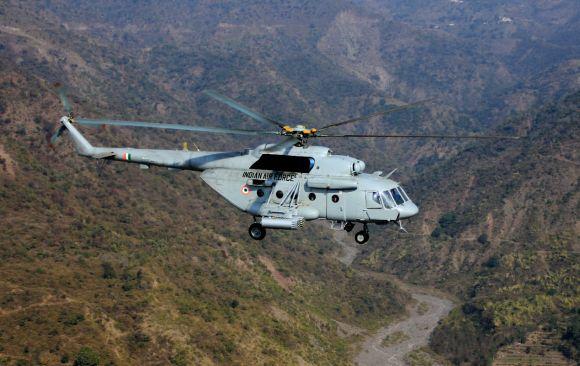

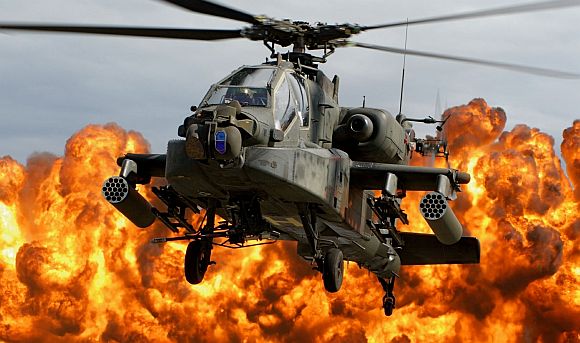
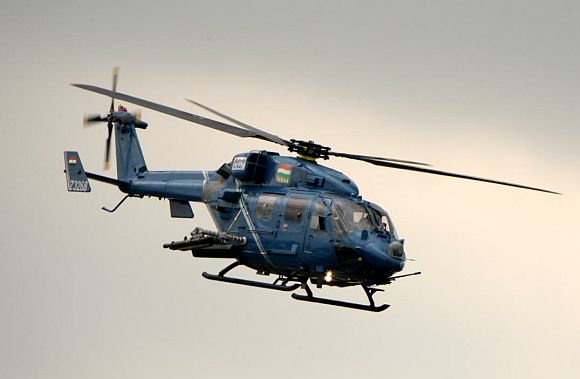






GreaT NewS Kd..
ReplyDeleteNitin